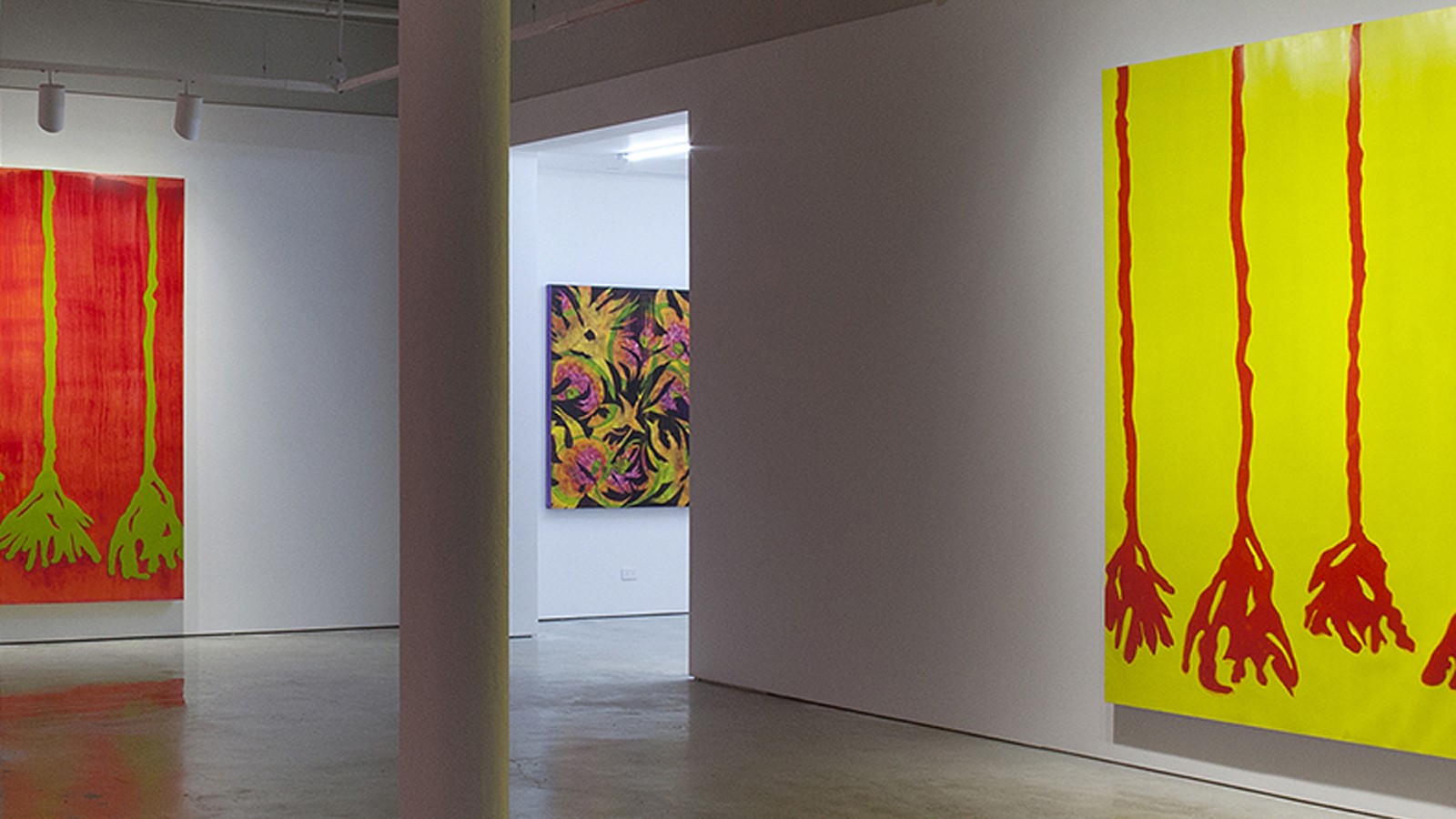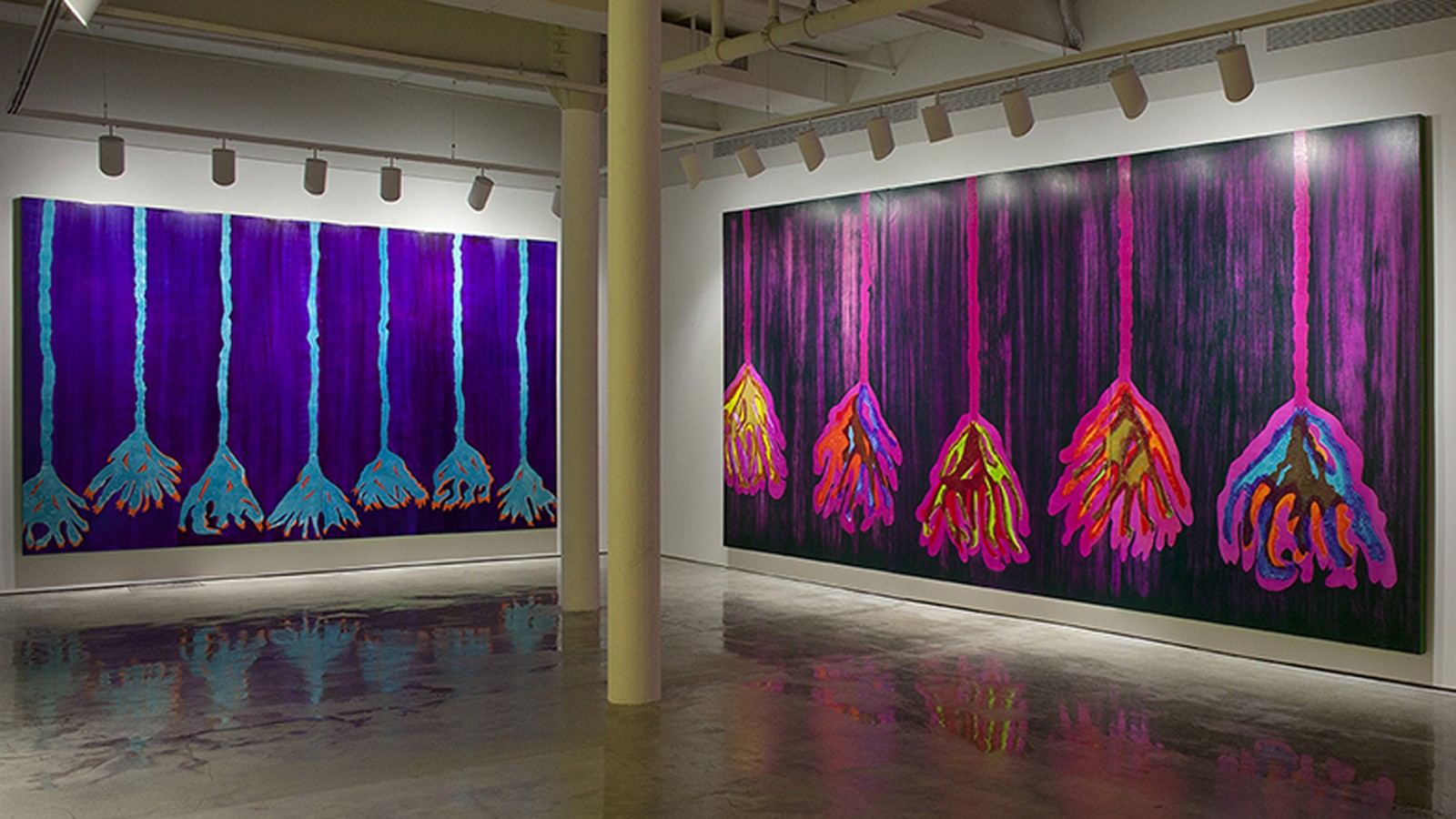It Takes One: Marylyn Dintenfass
I am an artist: painter, printmaker, sculptor, and installation artist. Materials are of great interest to me and I have used everything from anodized aluminum to zinc oxide at different times in my career. While my materials have varied, my themes, intentions and imagery have had great consistency throughout my work. In essence, I would say that as a person, and as an artist, one and inseparable, my work is rooted in the nature of being and the being of nature. My work is all about “things not being what they seem” and in nature, in landscape, in a garden; the paradox is that there is great beauty and great danger occupying the same space. Some of the most beautiful plants are deadly toxic. Some of the creatures we encounter in the garden can be very dangerous, and beautiful. My last exhibition Drop Dead Gorgeous was derived entirely from the garden as will be my new exhibition, spring 2015 in New York.
How would you define a cultural landscape?
I define a cultural landscape as a work made by nature and man. A garden is a landscape designed by a person, and a cultural landscape can be a painting that derives its imagery from elements of the landscape. I believe in a fundamental way that landscape is the basis of everything and it is something we go to, in countless ways and for countless reasons. I am reminded of the art collector who revels in the possession of art and then comes to realize that it is he who is really, finally, possessed by the art. I possess landscape as an artist, but I know that landscape possesses me in complete and utterly inescapable ways. I remember going to the remote Great Bear Rainforest of British Columbia a few years ago … a pristine environment, a surprising rainforest, and colorful star fish that could be picked up from shallow waters, the clarity of nature’s palette, the colors of sky, sea, foliage and rapidly changing light … I embraced it. Never able to forget it, I now realize how it continues to inspire me and has changed the nature, the culture of my being, and of my art. I feel a similar way about the ancient Greek city of Ephesus … an urban designed environment.

More than a decade ago you and John Driscoll, your husband, purchased a property with a significant landscape garden designed by Paul Mayen. How has this affected you and your work?
Paul Mayen loved conundrums and the garden reflects this. It is very unusual, beautiful … and captivating. It is inspired. I respect and am myself inspired by Mayen’s creative approach to the garden, which is fanciful, inventive, fearless and ambitious. It is a powerful connection for me, the connection to Mayen as an artist, to the garden, to nature as a source of beauty and conflict, as metaphor.

How does your understanding of this landscape influence your art?
I was born in Brooklyn, an urban environment. Now having spent a decade or more in the natural environment of western Putnam County I have acquired an enhanced array of natural landscape shapes, forms, colors and gestures derived from plants, flowers and trees. This is all a potent resource of the paradox of beauty and danger in the garden. This infuses my work and expands the range of my concept of “things are not what they seem.” A beautiful flower can be absolutely toxic to humans, other animals, other plants and creatures. In the garden, beauty can be a defense mechanism as well as a means of seduction. This past summer we encountered in the garden a beautiful, sublimely elegant and graceful creature … it was mesmerizing. It was also four and a half feet of deadly rattlesnake. I like that paradox as a rich metaphor for all of existence. It might turn up in one of my paintings one day soon. That is cultural landscape. That is my art.
What is the message you would like to leave our readers about stewardship?
The being of nature in a landscape becomes the nature of one’s being. In this garden we can thank Paul Mayen for that. And for us it is a matter of how to carry it forward in the most respectful yet creative and thoughtful way possible.







